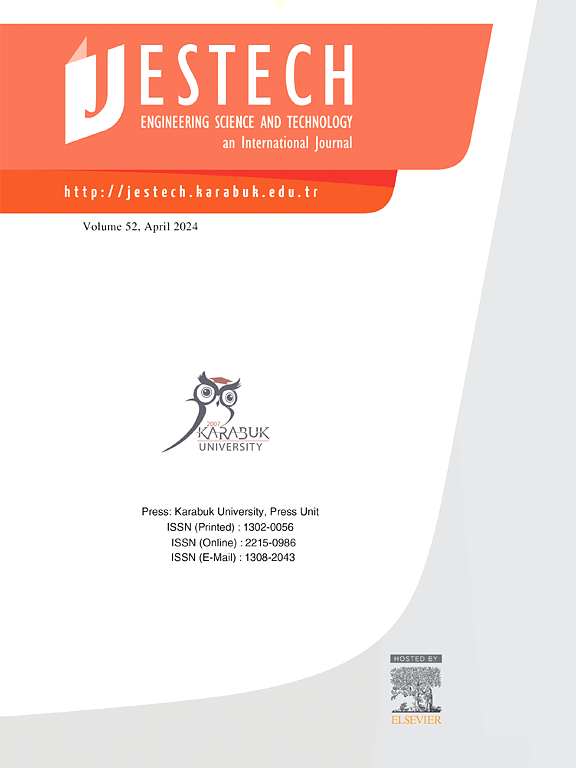A comparative analysis of core material and gap sizing effect on the high-power inductor design
IF 5.1
2区 工程技术
Q1 ENGINEERING, MULTIDISCIPLINARY
Engineering Science and Technology-An International Journal-Jestech
Pub Date : 2025-02-13
DOI:10.1016/j.jestch.2025.102001
引用次数: 0
Abstract
Air-gaps are used in the core structures of inductors, which are used as energy-storing components in power electronic circuits, to keep them away from saturation. As a result, changes in the electrical and magnetic parameters of the inductor are inevitable due to air-gaps. Depending on the electromagnetic properties of the core material used, the saturation current of the inductor and the change in inductance values are behaviors that need to be determined carefully. In this study, saturation flux values and inductance change graphs of high-power and medium-frequency inductors designed with soft magnetic core materials such as amorphous, nanocrystalline and 6,5%SiFe and using air-gaps in their core structures were comparatively analyzed. Although the amorphous core inductor exhibited better electrical performance at the relevant operating frequency and current values, according to the electromagnetic analysis made with the FEA software, the high magnetostriction coefficient of the amorphous material should be considered in applications that may be affected by vibration (applications of approximately 4 kHz and above). Additionally, evaluations regarding core losses and core dimensions are presented together with the results of comparative analyses.

求助全文
约1分钟内获得全文
求助全文
来源期刊

Engineering Science and Technology-An International Journal-Jestech
Materials Science-Electronic, Optical and Magnetic Materials
CiteScore
11.20
自引率
3.50%
发文量
153
审稿时长
22 days
期刊介绍:
Engineering Science and Technology, an International Journal (JESTECH) (formerly Technology), a peer-reviewed quarterly engineering journal, publishes both theoretical and experimental high quality papers of permanent interest, not previously published in journals, in the field of engineering and applied science which aims to promote the theory and practice of technology and engineering. In addition to peer-reviewed original research papers, the Editorial Board welcomes original research reports, state-of-the-art reviews and communications in the broadly defined field of engineering science and technology.
The scope of JESTECH includes a wide spectrum of subjects including:
-Electrical/Electronics and Computer Engineering (Biomedical Engineering and Instrumentation; Coding, Cryptography, and Information Protection; Communications, Networks, Mobile Computing and Distributed Systems; Compilers and Operating Systems; Computer Architecture, Parallel Processing, and Dependability; Computer Vision and Robotics; Control Theory; Electromagnetic Waves, Microwave Techniques and Antennas; Embedded Systems; Integrated Circuits, VLSI Design, Testing, and CAD; Microelectromechanical Systems; Microelectronics, and Electronic Devices and Circuits; Power, Energy and Energy Conversion Systems; Signal, Image, and Speech Processing)
-Mechanical and Civil Engineering (Automotive Technologies; Biomechanics; Construction Materials; Design and Manufacturing; Dynamics and Control; Energy Generation, Utilization, Conversion, and Storage; Fluid Mechanics and Hydraulics; Heat and Mass Transfer; Micro-Nano Sciences; Renewable and Sustainable Energy Technologies; Robotics and Mechatronics; Solid Mechanics and Structure; Thermal Sciences)
-Metallurgical and Materials Engineering (Advanced Materials Science; Biomaterials; Ceramic and Inorgnanic Materials; Electronic-Magnetic Materials; Energy and Environment; Materials Characterizastion; Metallurgy; Polymers and Nanocomposites)
 求助内容:
求助内容: 应助结果提醒方式:
应助结果提醒方式:


